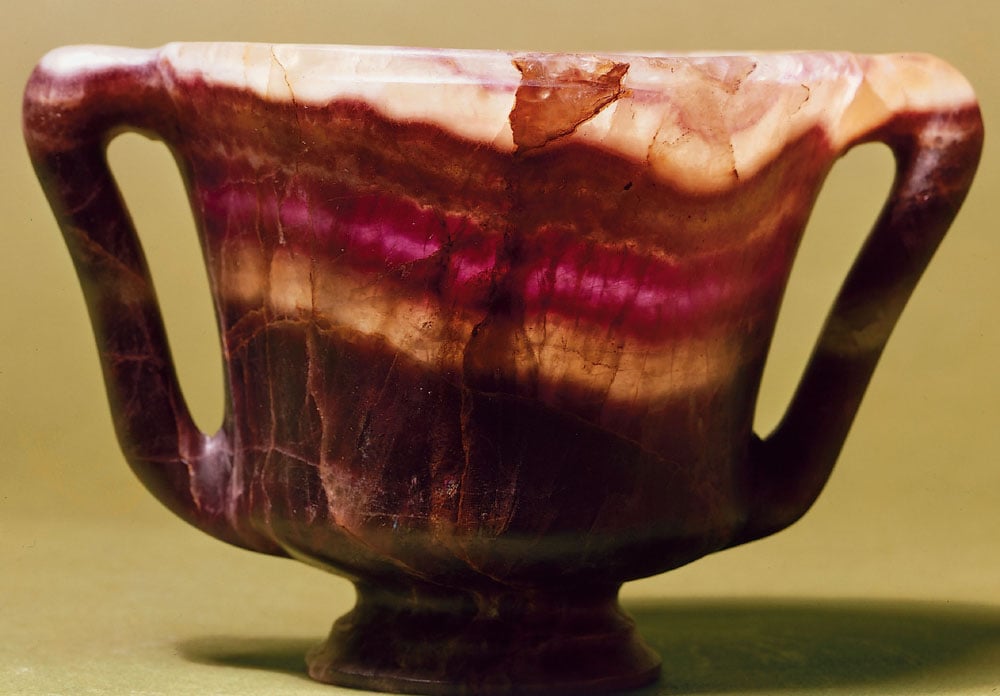
This two handled 'Kanthros' type drinking cup is horizontally banded in shades of purple and white and appears at its most exquisite when light passes through it. Finding pieces of murra large enough to carve was very difficult and extremely expensive. This cup is made from a relatively rare and valuable mineral, fluorspar, which was prized in Roman times for its banded appearance and the special flavour which it gave to wine drunk from it. In Roman times, the mineral could only be found in Parthia, modern day Iran. According to Pliny, fluorspar vessels were first brought to Rome by Pompey the Great in 62-61 BC after his victories in the East. Fluorspar has been employed in more recent times for ornamental purposes using Derbyshire fluorspar, known as blue John. Few such cups have survived from antiquity. It was presented to the British Museum in commemoration of Lord Crawford's 25 years as Chairman of the Art Fund.
More information
Title of artwork, date
The Crawford Cup, 1st–2nd century AD
Date supported
1971
Medium and material
Fluorite
Dimensions
9.7 x 10.7 cm
Grant
2300
Total cost
2300

Get a National Art Pass and explore British Museum
You'll see more art and your membership will help museums across the UK
National Art Pass offers available at British Museum
Art Funded by you FAQs
Contact us
If you have a question about a work of art in our archive, please contact the Programmes team. We’ll be happy to answer your enquiry.